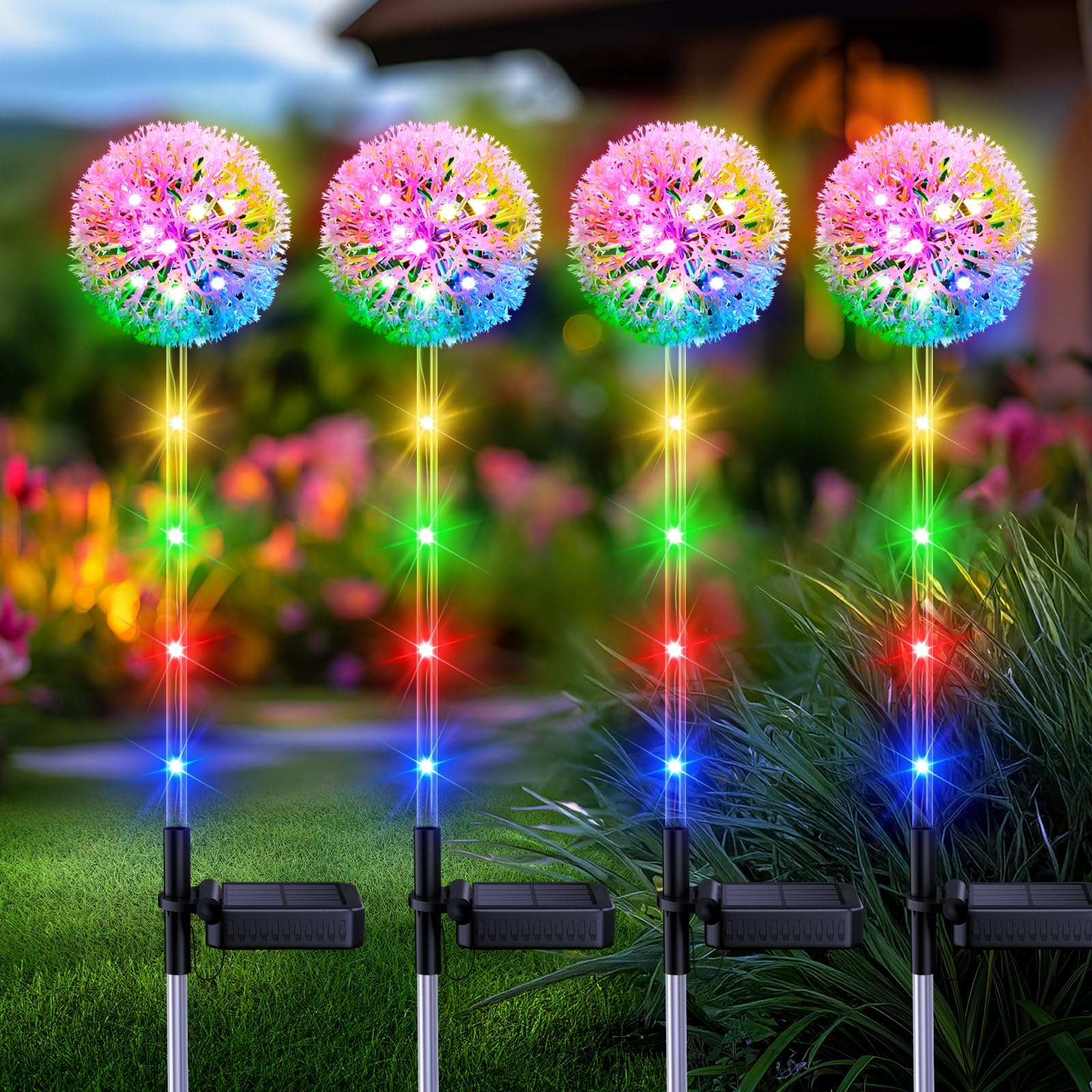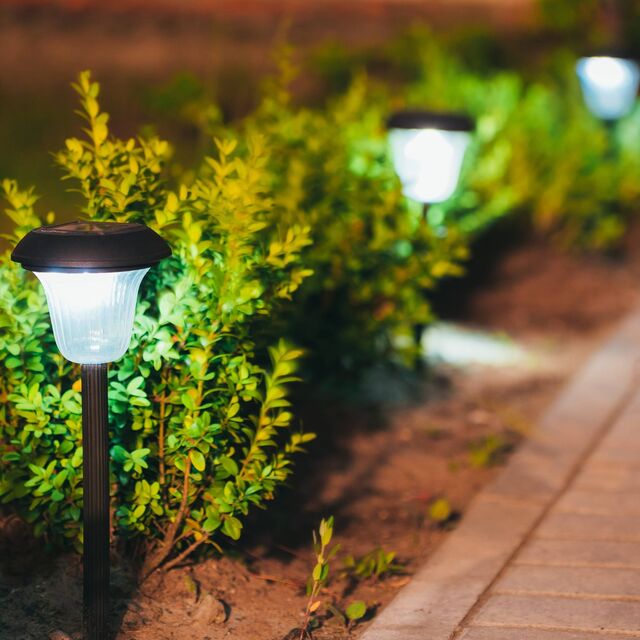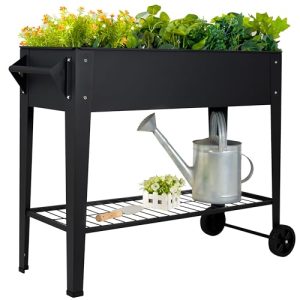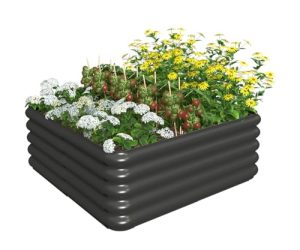Have you ever wondered if those charming solar garden lights, while illuminating your outdoor space, could be affecting your plants? As you stroll through your garden, basking in the soft glow of these eco-friendly lights, it’s natural to question their impact on plant health.
After all, your garden is a living ecosystem, and every element, including lighting, plays a role in its well-being. Imagine ensuring your garden thrives without compromising on its beauty. By understanding how solar garden lights interact with your plants, you can make informed choices, optimizing both aesthetics and health.
Let’s explore the intriguing relationship between solar garden lights and plant growth, and uncover how to maintain harmony in your garden sanctuary. Dive in, and discover the hidden influence of your garden’s nighttime ambiance.

Credit: www.facebook.com
Solar Garden Lights Functionality
Solar garden lights provide gentle illumination that generally does not harm plants. They can create a soothing garden ambiance without disrupting plant growth. These lights are designed to be eco-friendly and safe for all garden environments.
Solar garden lights have become a popular choice for illuminating outdoor spaces, but their impact on plant life remains a topic of interest. By understanding how these lights function, you can make informed decisions about your garden’s lighting setup and its effect on your plants.How Solar Lights Work
Solar garden lights harness the sun’s energy during the day, storing it in rechargeable batteries. At night, this stored energy powers LED lights, providing illumination without relying on electricity from the grid. The efficiency of solar lights largely depends on their exposure to sunlight. So, placing them strategically can maximize their functionality. Unlike traditional lights, solar lights emit a softer glow, reducing potential disturbances to plant growth. But, do they really affect plant health?Types Of Solar Garden Lights
Solar garden lights come in various designs, each serving different purposes.- Pathway Lights:These are usually used to line walkways, offering both practical navigation and aesthetic appeal.
- Spotlights:Ideal for highlighting specific areas like garden beds or sculptures, spotlights provide concentrated beams of light.
- Decorative Lights:Often found in whimsical shapes or colors, these lights add charm to your garden, focusing more on aesthetics than functionality.
Light Spectrum And Plant Growth
Solar garden lights emit a light spectrum that can influence plant growth. Different wavelengths affect photosynthesis and flowering. The impact depends on the light’s intensity and duration.
Understanding the light spectrum and its role in plant growth is crucial for anyone interested in gardening. Solar garden lights, often used for their eco-friendliness and aesthetic appeal, can have varying effects on plants based on the spectrum of light they emit. While these lights are primarily designed to illuminate outdoor spaces, they can inadvertently influence plant growth, depending on their proximity and the type of light they produce.Understanding Light Spectrum
The light spectrum consists of different colors, each with unique wavelengths. These colors range from blues to reds, with each affecting plant growth in distinct ways. For instance, blue light is known to encourage vegetative growth, making leaves lush and green. When you use solar garden lights, it’s essential to know the type of light they emit. Are they primarily blue, red, or a mix? This will help you understand their potential impact on your garden.Photosynthesis And Light Needs
Photosynthesis is the process by which plants convert light into energy, crucial for their growth and survival. Plants require specific wavelengths of light to perform photosynthesis efficiently. Red and blue lights are particularly effective for this process. If your solar garden lights emit these colors, they might actually help your plants, especially in the evening or during low-light conditions. However, excessive exposure to artificial light can disrupt plants’ natural cycles. Are your solar lights on all night? Consider turning them off during certain hours to mimic natural darkness, which some plants need for processes like flowering. Understanding how light spectrum affects plants can guide you in choosing the right solar garden lights. By paying attention to light needs and patterns, you can create a garden that’s both beautiful and beneficial for plant growth.Impact Of Artificial Light On Plants
Artificial light plays a significant role in plant growth. Solar garden lights are popular for outdoor spaces. But their effect on plants is a concern. Some worry these lights might disrupt plant cycles.
Effects On Growth Patterns
Plants rely on natural light cycles for growth. Artificial lights can alter these cycles. Extended light exposure may affect plant growth rates. Some plants may grow faster, others slower. This change depends on the plant species. Understanding plant needs is crucial. Select the right light type for your garden.
Potential Stress Factors
Artificial lights might stress some plants. Stress can occur from prolonged light exposure. It can disrupt natural plant rhythms. Plants may become weaker or less resilient. They may also show signs of reduced health. This includes wilting or discoloration. Monitoring plant health is important. Adjust light placement if stress signs appear.
Solar Lights And Nighttime Illumination
As the sun sets and darkness envelops your garden, solar lights come alive, offering a gentle glow that can transform any outdoor space into a magical landscape. But have you ever wondered how this nighttime illumination might affect your plants? While solar garden lights are designed to enhance your garden’s aesthetic appeal, it’s essential to understand their impact on the natural rhythms and processes of your plants.
Influence On Circadian Rhythms
Plants, much like humans, follow a circadian rhythm—a natural cycle that dictates their behavior. This cycle is heavily influenced by light and darkness. Solar lights can potentially disrupt this rhythm by extending light exposure beyond natural daylight hours. Imagine a plant that is used to winding down as dusk falls, but now is exposed to additional light. It might struggle to enter its rest phase, affecting processes like energy conservation and growth. To ensure your plants stay healthy, consider using solar lights with timers or motion sensors to minimize constant illumination.
Nighttime Photosynthesis Effects
While most plants perform photosynthesis during the day, some can engage in a process called CAM photosynthesis at night. This process allows them to open their stomata at night to absorb carbon dioxide, which is then used during the day. Excessive nighttime illumination from solar lights might interfere with this process, affecting the plant’s ability to effectively manage water and energy. To safeguard this natural phenomenon, place solar lights thoughtfully, avoiding direct illumination on plant leaves.
As you plan your garden lighting, consider your plant’s needs. Are your lights enhancing your garden’s beauty without compromising plant health? Balancing aesthetics with the needs of your plants can lead to a harmonious garden environment.
Considerations For Garden Design
Designing a garden is a delicate balance between aesthetics and plant health. While solar garden lights can add charm and functionality to your outdoor space, you might wonder how they affect your plants. It’s crucial to consider both the visual appeal and the well-being of your plants when integrating solar lighting into your garden design.
Balancing Aesthetics And Plant Health
Solar garden lights offer a magical glow that transforms your garden at night. But, how does this artificial light impact your plants? Generally, low-intensity solar lights won’t harm your plants. However, if you have sensitive species, it’s wise to monitor their response to prolonged exposure.
Think about the types of plants in your garden. Some might thrive with a bit of extra light, while others prefer darkness to rest and rejuvenate. A friend once shared her experience of how her ferns seemed to flourish under the gentle glow of solar lights, creating a lush, enchanted garden space.
Ultimately, balance is key. You want your garden to be beautiful without compromising the health of your beloved plants. Wouldn’t it be fascinating to find that sweet spot where nature and technology coexist harmoniously?
Positioning And Light Intensity
Where you place your solar lights makes a significant difference. Aim to position lights where they enhance pathways or highlight specific features without overwhelming your plants. Avoid placing lights too close to plant beds if they are particularly bright.
Consider adjustable lights that let you control the intensity. This way, you can enjoy a soft glow that complements your garden’s natural beauty without overpowering it. A neighbor found success by strategically placing lights behind shrubs, creating a subtle backdrop that didn’t disturb plant growth.
Experiment with different positions and intensities. You might discover that a slight adjustment can transform your garden’s nighttime ambiance while keeping plants happy. How do you plan to create a garden that’s both inviting and plant-friendly?

Credit: www.amazon.com
Benefits Of Solar Garden Lights
Solar garden lights offer eco-friendly illumination without harming plant growth. They provide soft, ambient light that doesn’t interfere with photosynthesis. Perfect for enhancing gardens while keeping plants healthy.
Solar garden lights offer multiple benefits for gardens. They provide illumination while being kind to the environment. These lights have become popular in many gardens around the world. Their popularity is due to their energy efficiency and aesthetic appeal. Below, we explore some of the key benefits they bring.Eco-friendly Lighting Solutions
Solar garden lights harness the sun’s energy. They do not need electricity from the grid. This makes them a sustainable choice. Using solar lights helps reduce carbon footprints. They rely on renewable energy, which is cleaner and safer for our planet. This eco-friendly approach supports a greener environment.Enhancing Garden Beauty
These lights enhance the beauty of any garden. They highlight pathways and garden features. Their soft glow adds charm to outdoor spaces. Solar garden lights come in various designs and colors. This variety allows for personalized garden aesthetics. They create a welcoming atmosphere for evening gatherings. Solar lights also improve safety. Well-lit paths and gardens prevent accidents at night. Their presence adds both beauty and functionality. This dual purpose makes them an excellent garden addition.Tips For Safe Usage
Solar garden lights have little impact on plant growth. They emit soft light that doesn’t disturb natural cycles. Ensuring proper placement keeps plants healthy and illuminated pathways safe.
Solar garden lights add charm to outdoor spaces. Yet, gardeners often worry about their impact on plants. Properly used, these lights can enhance your garden without harming your plants. Here are some tips for using solar lights safely around plants.Minimizing Impact On Plants
Place solar lights at a safe distance from plants. This prevents excess light exposure. Opt for lights with adjustable brightness settings. Dimmer lights reduce stress on plants at night. Arrange lights to avoid direct beams on foliage. This minimizes potential heat buildup.Choosing Appropriate Light Types
Select solar lights with warm, soft tones. Warm lights are gentler on plants. Avoid lights with harsh, blue hues. Blue light can disrupt plant growth cycles. Consider using lights with motion sensors. These only activate when needed, limiting plant exposure.
Credit: www.express.co.uk
Frequently Asked Questions
Do Solar Lights Harm Plant Growth?
Solar garden lights do not harm plant growth. They emit low-intensity light, which is insufficient to affect plants’ photosynthesis. However, excessive artificial lighting might disrupt natural day-night cycles. It’s essential to position solar lights carefully to avoid overshadowing plants and ensure they receive adequate natural sunlight.
Can Solar Lights Help Plants At Night?
Solar lights can provide minimal illumination at night, but they don’t significantly benefit plants. Most plants need sunlight for photosynthesis, not artificial light. While solar lights can enhance garden aesthetics and provide safety, they are not a substitute for sunlight.
Ensure plants get enough natural light during the day.
Do Solar Lights Affect Plant Flowering?
Solar lights generally don’t affect plant flowering. Most plants rely on natural daylight for growth cycles, including flowering. Artificial light from solar garden lights is usually too weak to influence these cycles. To maintain healthy flowering, ensure your plants receive sufficient natural light and proper care throughout the day.
Are Solar Lights Safe For All Plants?
Solar lights are safe for most garden plants. They emit low-intensity light that doesn’t interfere with plant growth or harm them. However, ensure solar lights don’t overshadow plants, blocking their access to natural sunlight. Proper placement ensures both aesthetic appeal and plant health in your garden.
Conclusion
Solar garden lights have minimal impact on plant growth. They provide gentle illumination without harming plants. Nighttime lighting can sometimes confuse plant cycles. But, most plants adapt well to these lights. Choosing solar lights with lower intensity reduces any potential effects.
Place lights carefully to avoid direct contact with sensitive plants. Balance aesthetics and plant health in your garden. Enjoy a beautiful, well-lit garden without worry. Solar lights offer eco-friendly lighting solutions for outdoor spaces. They enhance garden beauty while keeping plants safe.








